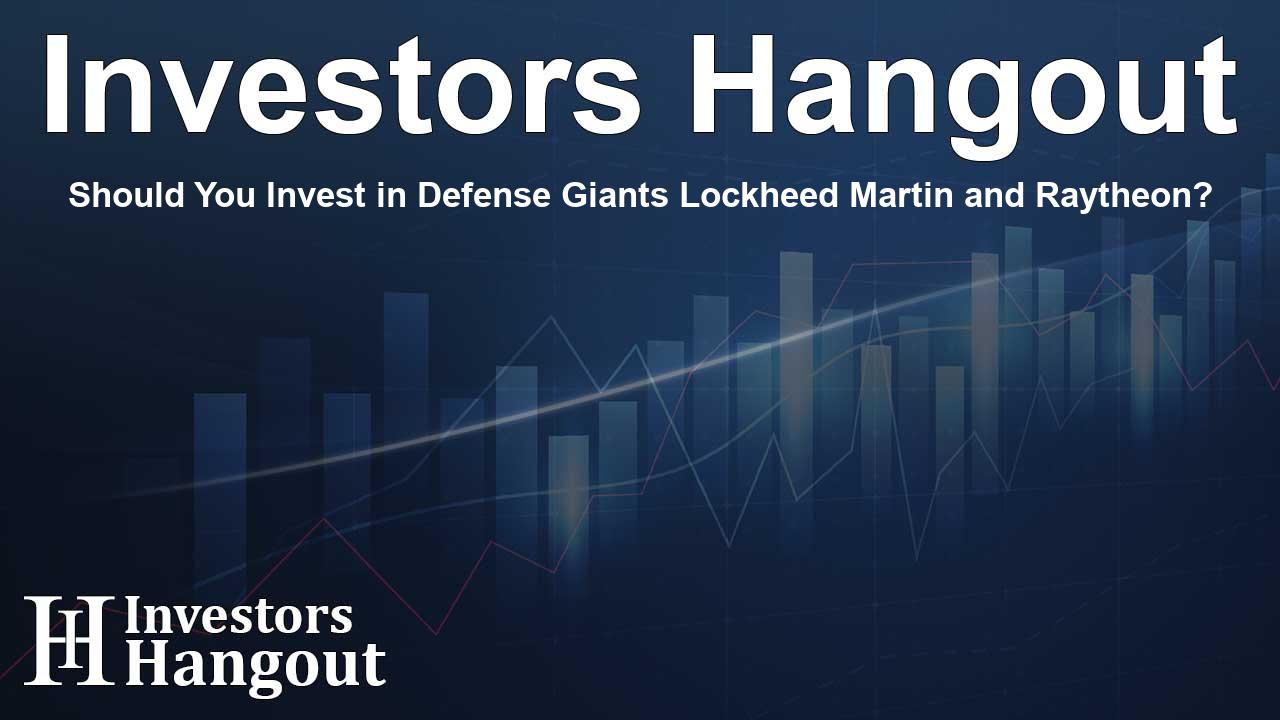Should You Invest in Defense Giants Lockheed Martin and Raytheon?

Understanding the Aerospace and Defense Industry
The aerospace and defense industry remains a robust sector amid fluctuating market conditions. With rising geopolitical tensions globally, including events in Eastern Europe and the Middle East, major defense companies are experiencing notable growth. Two prominent players in this arena are Lockheed Martin and Raytheon Technologies (RTX), both of which have seen their stock prices soar, reaching near 52-week highs.
Lockheed Martin: A Closer Look
Lockheed Martin stands as the largest defense contractor in the U.S. market, boasting an impressive market capitalization of $145 billion. This company specializes in a diverse portfolio that covers everything from aeronautics to missile systems and space operations.
In recent months, Lockheed Martin has reported remarkable gains, with its stock appreciating by 34% year-to-date. Strong earnings reports have played a significant role in this growth, with its most recent earnings per share (EPS) being an impressive $7.11, surpassing market expectations for the third consecutive quarter. Additionally, the company saw an 8.6% increase in revenue compared to the previous year.
However, while these fundamentals are compelling, technical indicators suggest caution may be warranted. The stock’s relative strength index (RSI) is nearing 80, pointing to overbought conditions. Trading significantly above its 50-day moving average might prompt some investors to consider waiting for a price correction. Analysts remain optimistic, with RBC raising its price target to $675, indicating potential upside. Still, the overall consensus implies a slight pullback could be in store, making it a strategic moment for long-term investors to wait for a more favorable entry point.
Raytheon Technologies: Performance and Potential
Raytheon Technologies is also making waves in the defense sector, boasting an impressive 47% increase in stock value year-to-date. This company is known for its advanced systems catering to both commercial and military needs and has consistently surpassed earnings expectations.
In its latest earnings report, Raytheon reported an EPS of $1.41, exceeding consensus estimates by $0.11. Revenue for the company saw a year-over-year increase of 7.7%, continuing its trend of positive earnings surprises.
Looking ahead, analysts are forecasting additional growth, with a consensus price target of $161.13. This projection indicates potential returns of around 30% from current stock prices. Nevertheless, investors should be cautious, as the stock's valuation is somewhat concerning. With a price-to-earnings (P/E) ratio of 71.45, Raytheon’s valuation might seem stretched, particularly when compared to Lockheed Martin’s more reasonable P/E ratio of 5.47.
As Raytheon approaches its historical highs, potential investors may need to evaluate the risk-reward scenario. While its forward P/E of 20 points to sustainable growth, a correction may present an opportune time for investors to establish or add to their position in the stock.
Strategizing for the Future
Both Lockheed Martin and Raytheon Technologies are experiencing considerable momentum, fueled by solid earnings and favorable market dynamics. However, as their stocks inch closer to historical highs and show signs of being overbought, prudence could lead investors to wait for a pullback before making new investments.
While these defense giants present strong fundamentals and promise long-term growth potential, those looking to invest at these elevated price points might face short-term risks. As the market adjusts, both Lockheed Martin and Raytheon could provide lucrative opportunities for those willing to exercise patience.
Frequently Asked Questions
What factors are driving growth in Lockheed Martin and Raytheon?
Lockheed Martin and Raytheon are benefiting from increased defense spending due to rising geopolitical tensions and their strong product portfolios.
Why might investors consider waiting to buy these stocks?
Technical indicators suggest both stocks are overbought, indicating a potential price correction could provide a better buying opportunity.
What is the significance of the P/E ratio in evaluating these stocks?
The P/E ratio helps investors understand a company's valuation; a high ratio could indicate overvaluation, particularly in the case of Raytheon.
How have Lockheed Martin's earnings reports influenced its stock price?
Consistently beating earnings expectations has bolstered investor confidence, contributing to its stock price surge.
What advice is generally recommended for investing in volatile markets?
Investors should assess fundamentals, monitor market conditions, and remain patient, waiting for corrections before making significant investments.
About Investors Hangout
Investors Hangout is a leading online stock forum for financial discussion and learning, offering a wide range of free tools and resources. It draws in traders of all levels, who exchange market knowledge, investigate trading tactics, and keep an eye on industry developments in real time. Featuring financial articles, stock message boards, quotes, charts, company profiles, and live news updates. Through cooperative learning and a wealth of informational resources, it helps users from novices creating their first portfolios to experts honing their techniques. Join Investors Hangout today: https://investorshangout.com/
Disclaimer: The content of this article is solely for general informational purposes only; it does not represent legal, financial, or investment advice. Investors Hangout does not offer financial advice; the author is not a licensed financial advisor. Consult a qualified advisor before making any financial or investment decisions based on this article. The author's interpretation of publicly available data shapes the opinions presented here; as a result, they should not be taken as advice to purchase, sell, or hold any securities mentioned or any other investments. The author does not guarantee the accuracy, completeness, or timeliness of any material, providing it "as is." Information and market conditions may change; past performance is not indicative of future outcomes. If any of the material offered here is inaccurate, please contact us for corrections.